Visit Radio Globo and Radio CBN Sao Paulo Brazil
São Paulo is the largest city in the southern hemisphere and one of the most populous in the
world, São Paulo is the most cosmopolitan center in the country.
Brazil is a town that has a habit of listening to a lot of radio and it seems that nothing will
change that custom.
CBN and Radio Globo occupy a privileged place in Brazilian listeners, they are undoubtedly the most listened radio stations in the country.
There are more than 780 Brazilian cities, where Radio Globo and CBN arrive, with a total of 89 million potential listeners.
Just under 2 years, they set up their new studios in the impressive Tower Bridge Corporate, located in the east side of Sao Paulo, on Avenida Jornalista Roberto Marinho, number 85. The building has a total of 25 floors and the 2 stations are located on the 24th floor with a privileged view, for the stationary bridge (Octavio Frias de Oliveira), a new and perhaps more famous postcard of the city of São Paulo.
It is the first time that a foreign journalist has access to an exclusive visit visiting all the facilities of these stations in Sao Paulo, Brazil.
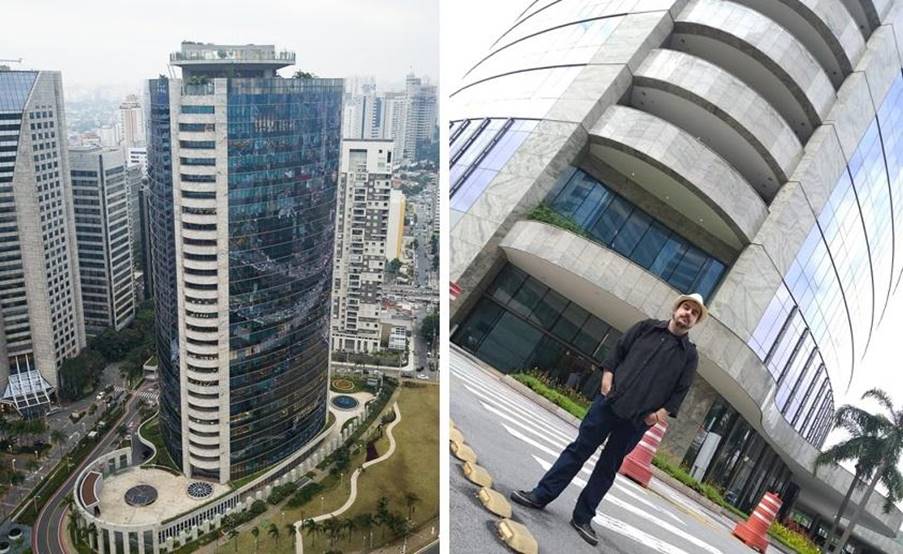
Martín Butera, is an Argentine journalist, currently lives in Brasilia DF, capital of Brazil, traveled more than a thousand kilometers to the south, towards the great city of Sao Paulo and brings us this exclusive report.
He is also an Amateur Radio and Dxers with his Argentine callsign LU9EFO and his Brazilian callsign PT2ZDX.
In Argentina he had several FM Radio projects, among the most important, Radio Atomika 106.1 Mhz www.radioatomika.com.ar stands out, a young format radio from the capital Buenos Aires Argentina, with 17 years still on the air.
We invite the readers of this report to read this note along with the video links, to better understand the content of this report.
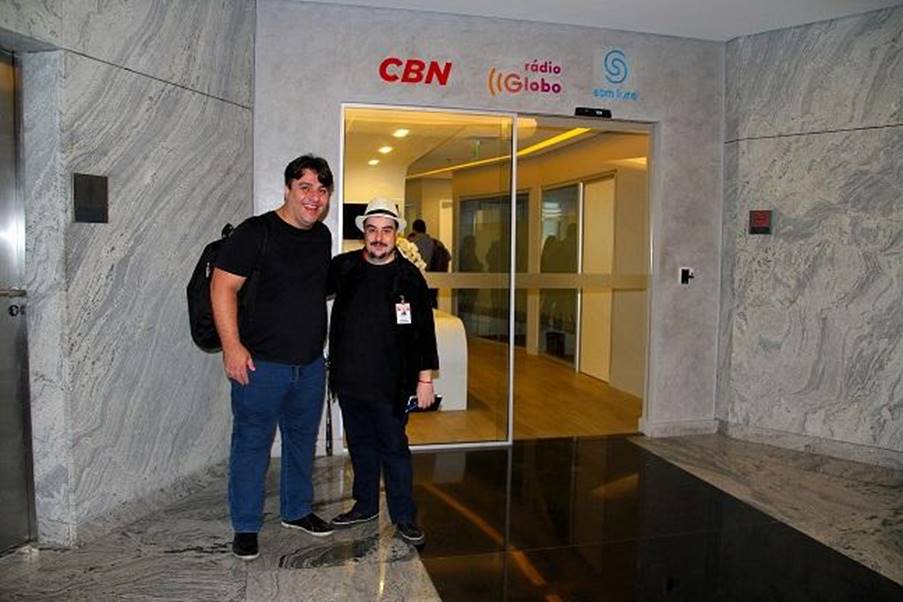
Leandro Marchiori, he has an enormous experience in the area of Broadcasting in Brazil and in technology applied to Broadcasting.
I work in various projects of armed radio studios, audio systems, RF transmission systems, satellite transmission systems, automation for studio environments, external broadcasts for concerts, external soccer broadcasts and extensive knowledge in Audio over IP ( AoIP), is the distribution of digital audio across an IP network such as the Internet. It is being used
increasingly to provide high-quality audio feeds over long distances. The application is also known as audio contribution over IP (ACIP) in reference to the programming contributions made by field reporters and remote events. Audio quality and latency are key issues for contribution links.
Leandro Marchiori, he was one of those responsible for the project and layout of both studies, which he said had more than 50 meetings and visits to the site before installing all the equipment.
Leandro Marchiori says: “Everything here was planned and everything was calculated to the smallest detail.”
Leandro Marchiori, tells me that I form and coordinate a great team of engineers, who had more than 50 meetings and technical visits to the new building before putting together the new studios.
Once they were sure of everything, they mounted everything in record time, they were only 2 months.
It proudly refers to the fact that they set up the largest IP audio system in Brazil and that these are the largest and most modern digital radio studios in the country.
Now if together with Leandro Marchiori, I invite you to accompany me to tour this important radio installation, Leandro will explain each sector to us, you can accompany the video in its original audio in Portuguese (I know that they will understand everything correctly).
Studios of Radio Globo
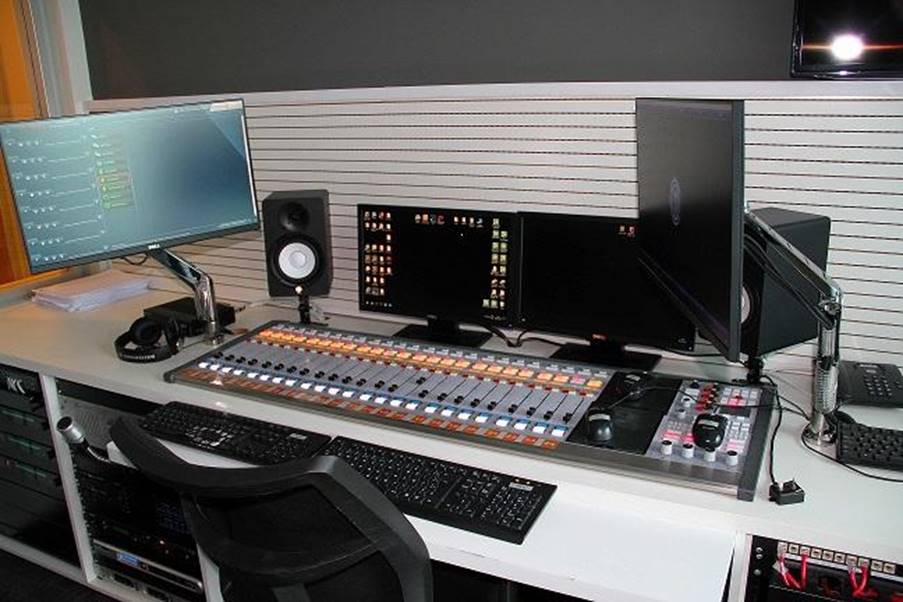
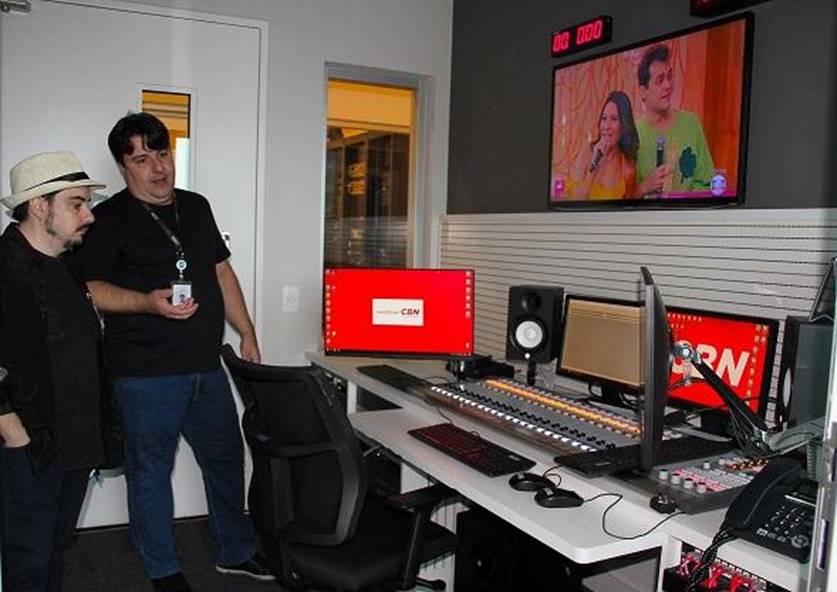
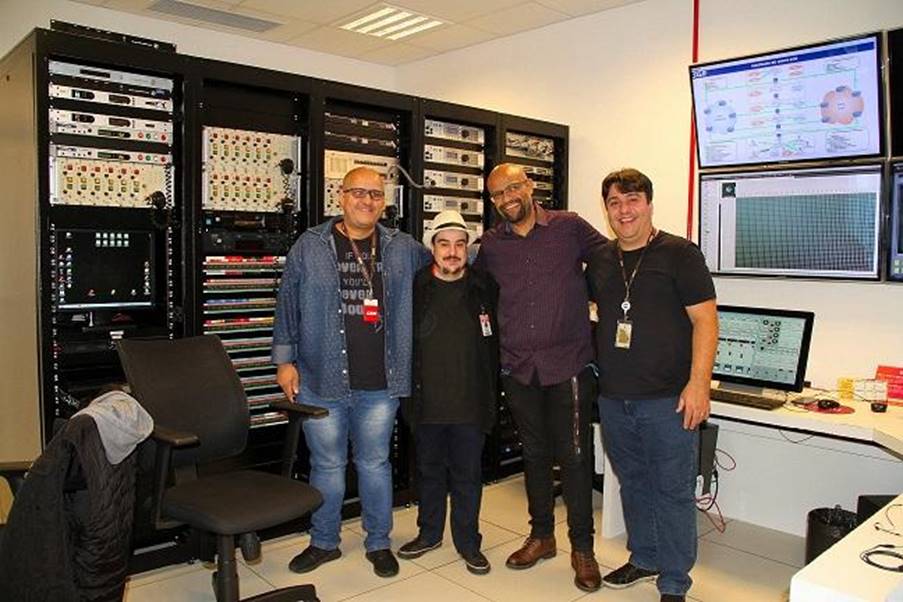
We leave the general monitoring room and Leandro Marchiori, takes me to know the studios of Radio Globo.
They must be the biggest studios I have seen, they really are very impressive.
They are not only equipped to transmit audio, but also to allow the listener to observe the presenters, commentators and reporters who speak to him every day. Thus converting listeners now, also on television viewers, through digital TV channels where radios broadcast.
The studios are now equipped with artistic lighting and special HD cameras and its programming not only online through its different applications, it is also strongly pointing to digital audio productions such as Podcast.
Rádio Globo São Paulo is a Brazilian radio station based in the city of São Paulo, capital of the state of the same name. It operates on the FM 94.1 MHz dial, with a port of 22 KW.
On February 10 of this year, the station turns off its frequency at AM 1100 kHz after almost 68 years on the air, to remain only broadcasting on FM and through digital TV channels and virtual platforms.
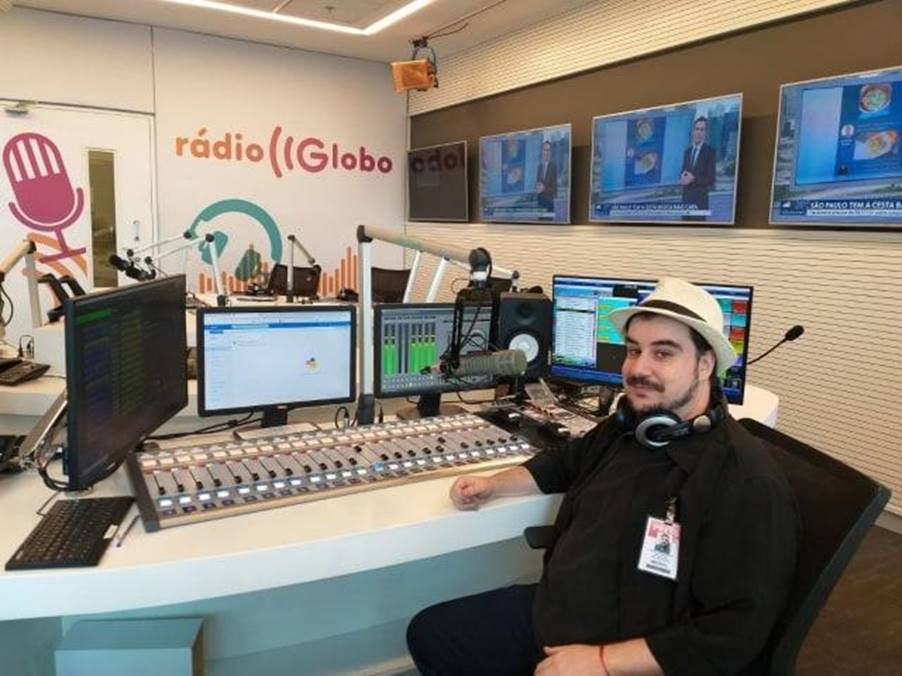
Visiting and showing exclusively, for you readers, the modern radio studios of Globo and CBN in Sao Paulo, Brazil, was for me a fabulous experience and perhaps unknown to many of us who like radio, we did not imagine the power of these have radios. In this part of the South American continent, they are truly amazing.
This does not end here, as if that were not enough, Martín Butera, took advantage of his visit to Radio Globo and CBN Radio, to interview an icon journalist currently on Radio in Brazil and who has also been a correspondent for CRI (China International Radio ).
Martín Butera Interview with Camila Olivo, renowned journalist from CBN Radio
According to an Ibope survey, 40% of internet users in Brazil are also podcast listeners. And the country is already the second largest consumer of the format, according to Spotify data, only behind the United States.
Camila Olivo is the presenter, screenwriter and editor of the daily CBN Panorama podcast and the CBN Professional weekly podcast.
Today it has become an icon and benchmark of the Podcast format in Brazil, invited daily to conferences related to the subject.
Camila Olivo is today one of the most listened to journalists in this format here in Brazil.
She lived for two years in China, where she worked as a correspondent for the CRI (China International Radio).
I invite you to meet Camila Olivo.
Before clarifying, whoever wants to follow this video interview, here is the original filming in Portuguese. Then I prepared a summary and adaptation or free translation, respecting the essence of my interviewee.
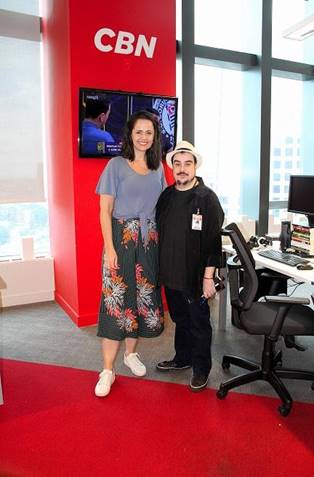
MB: How did CBN Radio come up with the idea of betting on the digital Podcast format?
CO: The first CBN Radio Podcast, it is already about 4 years old and it is a weekly Podcast, which is called CBN Professional. That Podcast had a lot of success and it was there that the radio began to transform its products to Podcast, although these were actually cuttings from the programming (recordings), for example a comment, an interview, things like that,
the radio began to perceive that these “cuts” had quite an audience, they were listened to, the downloads demonstrated it, it was there that the radio realized that it had to produce an independent product, beyond radio ° el aire ° and that is how it was that Podcast-specific products began to emerge, which were not or are not on the radio air.
MB: After that beginning, what is the evolution that Camila makes on these products? Do you think that people are listening to more Podcasts?
CO: I perceive that it grew a lot, last year 2019 was considered the year of the Podcast, many people in Brazil had no idea that it was a Podcast, but last year they aroused their curiosity, 2019 was very emblematic for us here in the radio.
Now in the month that we are doing this February 2020 interview, those of us who do radio know that audiences tend to drop a bit, people are on vacation, more relaxed, distracted. Here in Brazil, we use a phrase that says: “that the year begins after carnival”, that is, after March. Well that this year did not happen, in the month of February we had many downloads
and that was a surprise for all of us.
MB: Camila, do you think that with the Podcast, there is a new approach to radio with a younger audience? Do you think the podcast has something similar to Netflix, that of watching a movie or series when you want on demand? Do you see any kind of similarity in that?
CO: Yes, of course, it is very similar to Netflix, we have many young people who are listening to the Podcast today and the funny thing is that these young people did not have the habit of listening to the radio or they never even listened to the radio, nor did they know about its existence (laughs). Many of this new generation of listeners are young people who were born on YouTube and from there jumped to the Podcast. Many young people today know CBN Radio thanks to the Podcast.
I believe that this approach of young people is related to time, with the speed that is lived today, young people today do not want to turn on the radio and wait to hear what they want, for example let’s imagine a young man who wants to hear a news about football Brazilian and it occurs to him to turn on the radio, he is going to have to wait and listen to other things,
maybe a news economy, culture, advertising, music, and then finally hear about soccer and today young people do not want to waste that time, that’s why today they are used to going and searching the internet for what they want. Continuing with the example, the young man who wants to listen to some football, goes and looks for a football podcast and that’s it.
Besides, you already know how long it will take to listen, you know if it lasts 20 or 10 minutes, that on conventional radio does not happen, today young people have no patience.
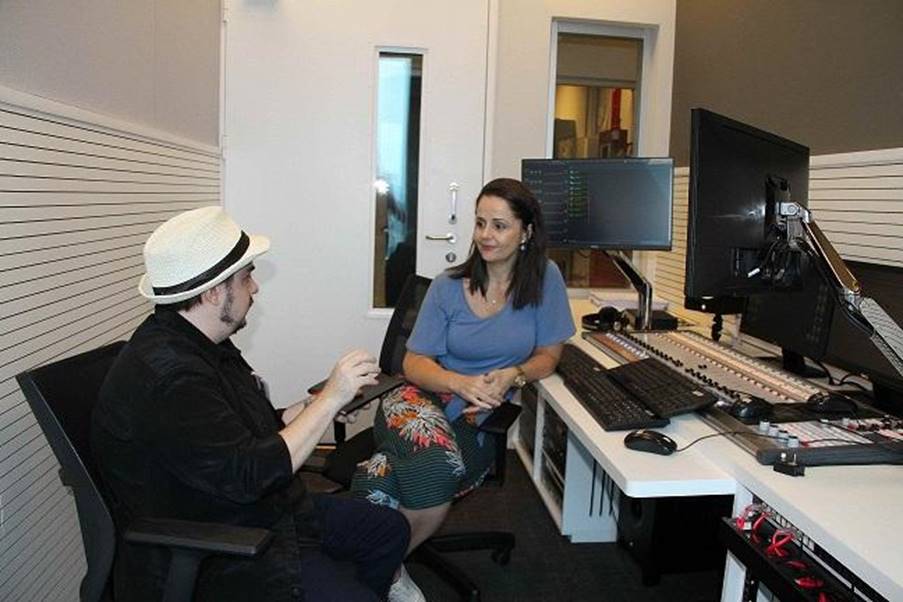
MB: Camila, let’s move on to another part of the interview, tell us how was your experience working for CRI (China International Radio)?
CO: The international radio of China, is a state project of the Chinese government, it is something very big, it is considered perhaps as the largest radio at a multi-language level, when I was in Beijing (Beijing), there was a 12-story building and each floor was destined for a foreign language, in our department in Portuguese, we shared the space with journalists of the Esperanto language, that the country does not even exist (laughs) … But the crazy thing is that, if there is a service in Esperanto language.
CRI’s mission is to spread news from China and Asia to the whole world, so that was my joba bit.
MB: and how was the CRI staff formed?
CO: It was made up of many Chinese and some Brazilian journalists, the Chinese are trained in Portuguese letters and were in charge of the translation of texts and we Brazilians gave it a journalistic touch, that exchange was something very enriching, of course without losing awareness of that we are working for the Chinese government.
MB: How was your relationship with international Portuguese-language listeners?
CO: At the time I worked at CRI, they were starting to get into FM radios in Portugal, on the other hand here in Brazil, the listener was more DX radio amateurs, they listened to us by short wave, they were a very faithful listener, they sent us letters email, they were very loving listeners and I know they continue to do so to this day.
MB: Can you explain to us a bit what that logic of the Chinese state is like, that mix between communism and capitalism?
CO: It is a very strong state, present in people’s lives, it is something difficult for me to understand that I am Brazilian, but I think it has a lot to do with cultural traditions, also a bit with Confucianism, which is now fashionable. among the elite of the Communist Party, which incorporates it as an instrument of cultural diplomacy.
People respect a lot what the government tells them, we can see it for example in how they pay attention to the issue of preventive care for Covid 19.
MB: And when you went to work at CRI, did you know how long you were going to be at the correspondent?
CO: I knew I was going for a year, I ended up liking it and I renewed for another year, after two years I already wanted to return to Brazil. Now I want to go back perhaps not to China, but to other Asian countries, I am very interested in culture and gastronomy.
MB: Have you thought about an Asian Food Podcast (laughs) …?
CO: Of course I already thought about it (laughs) … I just lack time, seriously I think that the Brazilian listener is not very interested in Asian or even Latin American culture, the Brazilian listener is more interested in what happens in North America and Europe in general. So Asia is still pending, there is a cultural barrier to the unknown and that ends up generating
disinterest, but well we can test it (laughs) …
MB: Thank you very much Camila for your time.
CO: Thanks to you and I hope I have helped you with the interview.
Note, the visit to the station and the interview with Camila Olivo, took place in February 2020 in the city of São Paulo, Brazil.
At that time, the Covid 19 Pandemic had not yet reached Brazil, so Martín Butera and his interviewees do not wear masks or respect social distance (today essential for our personal care and that of all of us).
Written by Martin Butera, in October 2020, in Brasilia DF, capital of Brazil.
